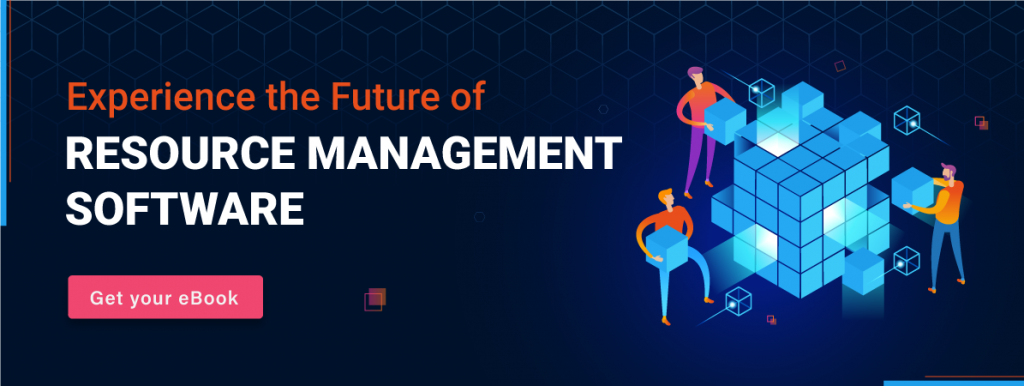Imagine a scenario where an IT company is required to increase its revenue by 7% and net income by 14% for the next five to six years. In addition, they would also like to establish their brand within their industry as a leading provider of products and services. But how can the organization plan to attain these goals with the changing market dynamics?
Organizations need to invest in a highly skilled and efficient workforce to stay ahead of the competition and meet their strategic goals. This is where strategic workforce planning comes into the picture.
It enables organizations to analyze and assess gaps and implement measures to ensure that they are equipped with the right people, for the right roles, at the right time for their long-term business vision.
In addition, it also helps reduce resourcing costs, minimize hiring/firing cycles, futureproof the workforce, etc. This blog highlights the key business benefits of strategic workforce planning.
But first, let’s begin with the basics-
What is strategic workforce planning?
Strategic workforce planning is a process that helps businesses and HR professionals proactively anticipate future human resource requirements to meet evolving business demands. It ensures that the organization has the right mix of talent to meet these goals and typically spans over a period of three to six years. Some examples of strategic workforce planning include global expansion initiatives, streamlining and optimizing work processes, career path development, etc.
The objectives of strategic workforce planning are to:
- Help accomplish critical future goals in an environment characterized by evolving demographics.
- Enable businesses to operate efficiently by anticipating fluctuating labor costs, economic trends, market prospects, and capability gaps.
- Assist in developing a comprehensive picture of where gaps exist between current and future competency requirements and implement gap reduction strategies.
Now that we have established what strategic workforce planning is, let’s look at some of its business advantages.
Business benefits of strategic workforce planning
Strategic workforce planning brings numerous benefits to an organization that enhances business profitability and sustainability. Below are the key business benefits of strategic workforce planning:
Aligns HR policies with long-term business strategy
As a part of a successful strategic workforce planning strategy, the HR department needs to proactively formulate the organization’s long-term goals and objectives with the key stakeholders. It will help them identify the strategic areas, roles, and skillsets required to attain the business goals.
It enables them to analyze the skill shortages and gaps within the organization in the short and long term. Additionally, it provides them sufficient lead time to implement suitable resourcing measures, including hiring well in advance to meet the new requirements. Finally, it ensures they have the right resources to meet their long-term goals.
Bridges the workforce capacity vs. demand gap for future projects
Strategic workforce planning enables organizations to forecast the gap between demand and supply to identify the shortfall or excess resources. For example, if a multinational company wants to double its sales in four years, they need to ensure they have the necessary engineering and other critical talents in operations.
So, managers have to foresee the capacity vs. demand gaps in advance and proactively take steps to fill the gap for their numerous business units in various regions. They can train/upskill current employees in the required field, begin planned recruiting to attract qualified resources and ensure the seamless execution of future projects.
Future-proofs your workforce for new initiatives
Bridging the skills gap and futureproofing the workforce enables organizations to stay relevant in the digital age, ensuring business growth and sustainability. In this ever-transforming business landscape, employees must regularly update their competencies to prevent them from becoming obsolete. Therefore, organizations must facilitate continual learning programs like retraining, upskilling, and other development opportunities.
It provides a road map for employees to diversify their knowledge and skill set, prepares them to take on multi-faceted activities in the future, and boosts efficiency and effectiveness. These initiatives help improve employee performance and accelerate organizational growth and development while ascertaining they are future-ready.
Minimizes resourcing costs significantly
Strategic workforce planning ensures that the right resource is allocated to the right project. In addition, it also helps to identify cost-effective global resources for projects and reduce resourcing costs. For example, an organization needs ten programmers and twenty developers to work on a strategic project in the next three years. Since the local resources could be expensive, leveraging global resources from low-cost locations can reduce project costs without compromising quality.
It helps organizations maintain the project’s financial health without compromising quality. In addition, strategic workforce planning also enables organizations to identify skilled junior resources for projects instead of expensive senior resources to control the costs. This enables them to gain a competitive edge and remain profitable and sustainable in the long haul. It can be aligned with their future diversification and expansion plans in different geographies.
Reduces frequent hiring and firing cycles
Due to a lack of proper workforce planning strategies, managers often recruit high-cost permanent resources for short-term requirements. However, when the project gets over, they are released to avoid an increased bench size. However, when another project arises that requires the similar expertise of the terminated resource, the company initiates the hiring process again.
If the hiring-firing cycle continues, it leads to cost escalations and reputational damage, resulting in missed market opportunities. To overcome such setbacks, organizations can formulate a strategic workforce plan to predict future resource shortages and implement corrective actions, thus ensuring that they have sufficient resources for their projects and minimizing the costly hiring and firing cycles. As a result, short-term opportunities can be effectively fulfilled by contingent resources.
Enables succession planning for critical roles.
Succession planning enables the identification of the next generation of leaders who can take over crucial positions after the current employees are promoted, leave for new career opportunities, or retire. Strategic workforce planning guides managers by providing a roadmap to maintaining business continuity even amidst changes.
It enables organizations to offer mentoring, technical and soft skills training, and shadowing possibilities to employees to advance their knowledge. It also helps the existing employees gain practical experience, better equip them for future undertakings, and relieves the pressure on critical resources.
Helps build a long-term retention strategy.
Most often, employees resign from organizations for various reasons like retirement, work stress, burnout, unequal pay, lack of career advancement opportunities, etc. It overburdens the existing employees and affects project progress and delivery. As a result, the company suffers considerable losses due to decreased productivity, morale, and competitive edge.
Strategic workforce planning guides organizations in building a long-term employee retention strategy, fostering enduring relationships with staff, and reducing employee turnover. It also helps facilitate Individual Development Programs (IDPs), shadowing opportunities, reverse mentoring, and cross-department collaboration to improve job performance and productivity. In addition, since employees are given opportunities to work on multi-faceted projects and expand their potential, they will naturally stay for the long term, thus reducing turnover rates.
How can workforce planning software help in achieving strategic goals?
An advanced workforce planning solution enables organizations to plan, forecast, and build an optimized workforce.
- The tool provides real-time centralized visibility into future projects’ resource demands. It helps managers initiate the workforce planning process by looking into various resource attributes like skill sets, competencies, availability, cost, location, etc.
- Additionally, the tool generates cost estimates for pipeline projects, allowing managers to identify, hire and schedule cost-effective resources for each project.
- Furthermore, capacity vs. demand reports helps identify potential talent shortfalls and surpluses and implement measures to overcome capacity problems in advance. It also helps prevent unnecessary hiring/firing cycles and last-minute hiring of high-cost resources.
- Last but not least, the modelling and simulation technique lets you explore the potential effects of different scenarios in a sandbox environment. Managers can then analyze and compare the outcomes of each scenario and select the best-fit resource plan and make informed decisions on future projects.
Conclusion
Strategic workforce planning is the lifeline of a successful and well-operating organization. The benefits mentioned above of strategic workforce planning have proved significant in the current business scenario. An enterprise-level workforce planning solution enables one to prepare for demographic change and create a long-term talent management strategy to improve your bottom line.
Does your organization seriously invest in strategic workforce planning?
The Glossary
The SAVIOM Solution
SAVIOM has over 20 years of experience helping multinational clients manage their resources efficiently and effectively. With over 20 years of experience, this Australian-based MNC has a global presence across 50 countries and has helped 100+ clients meet their specific business goals. SAVIOM also provides tools for project portfolio management, professional service automation, and workforce planning software. So, SAVIOM can help your business to establish an efficient system geared towards your specific business challenges.














